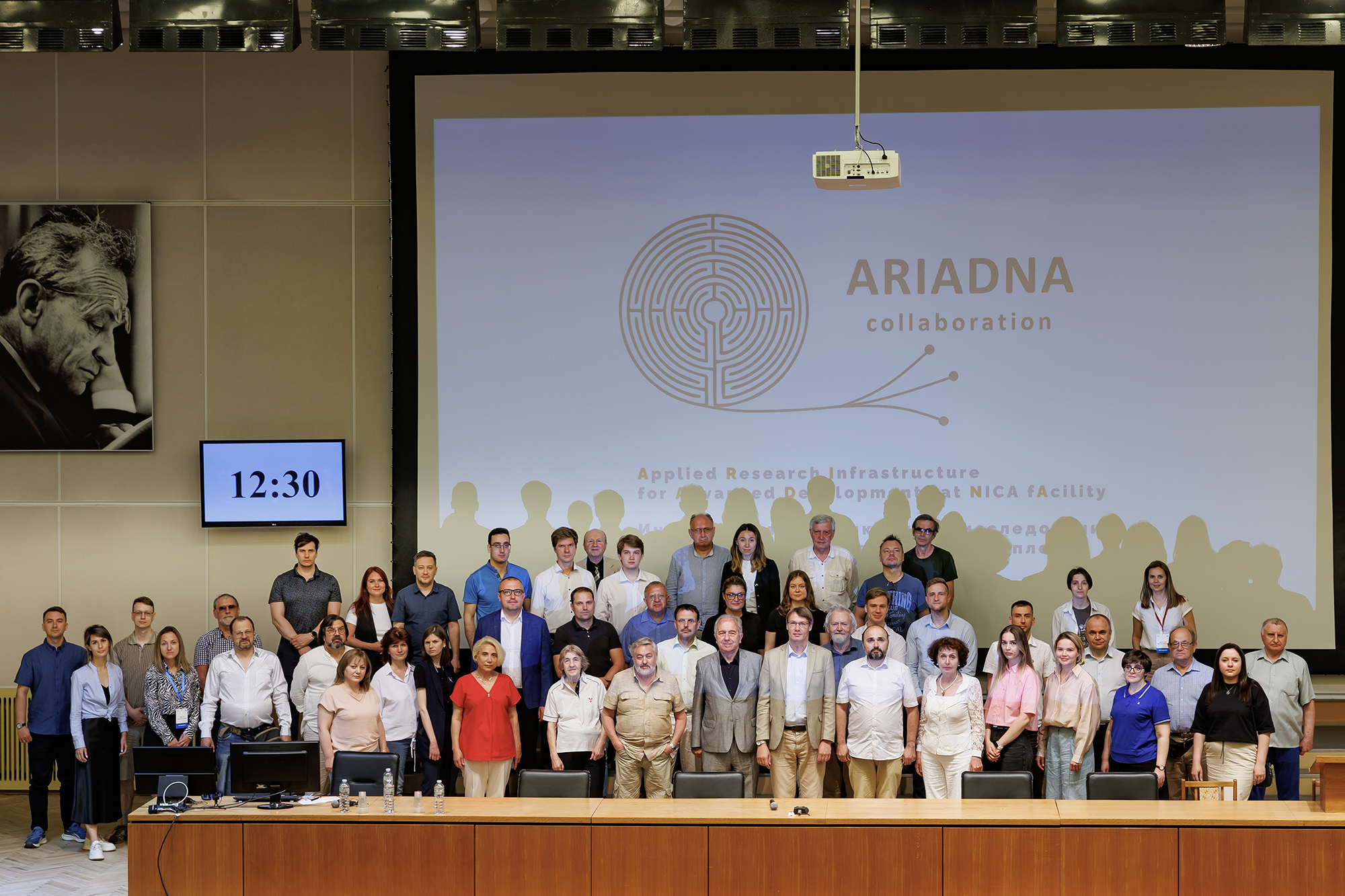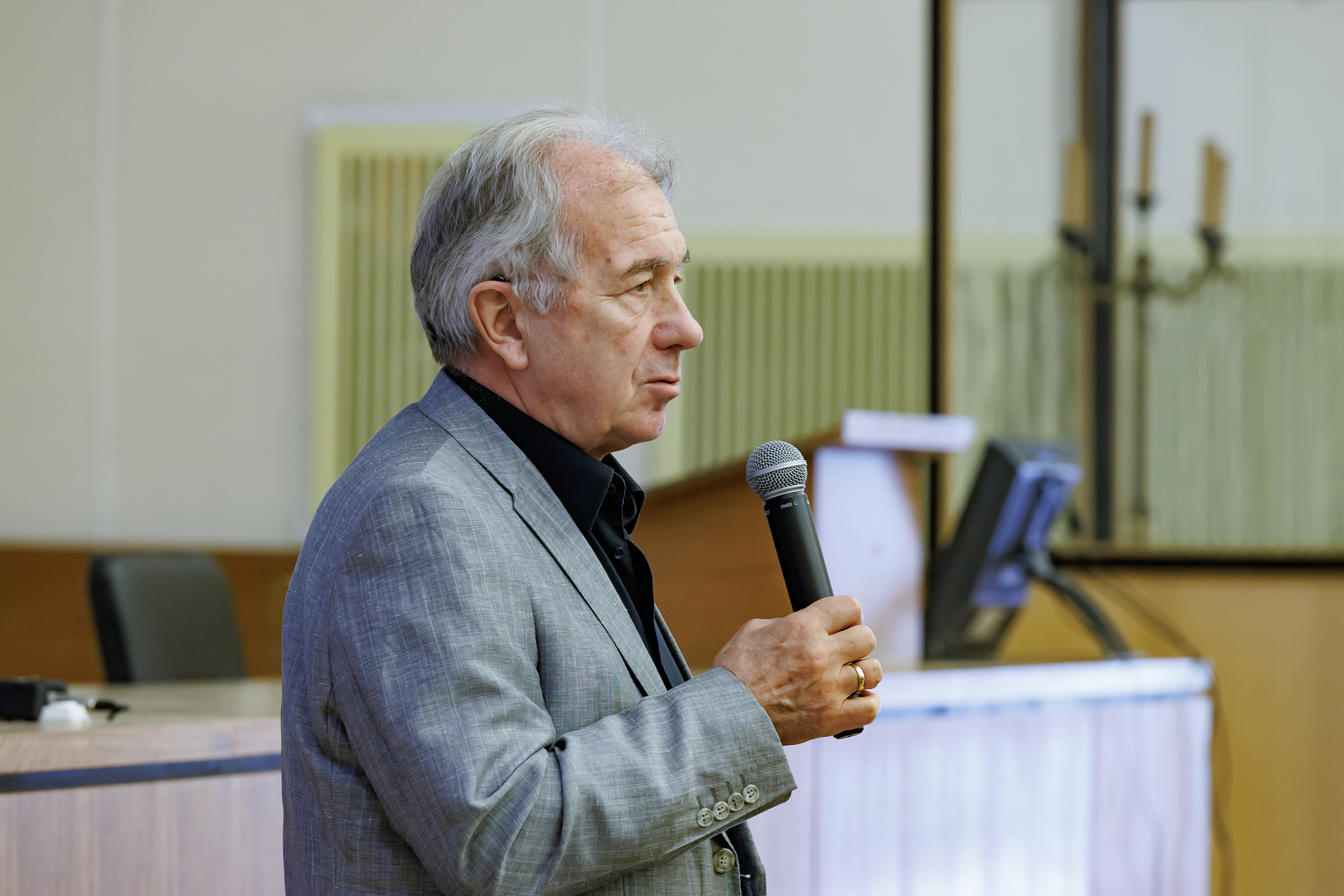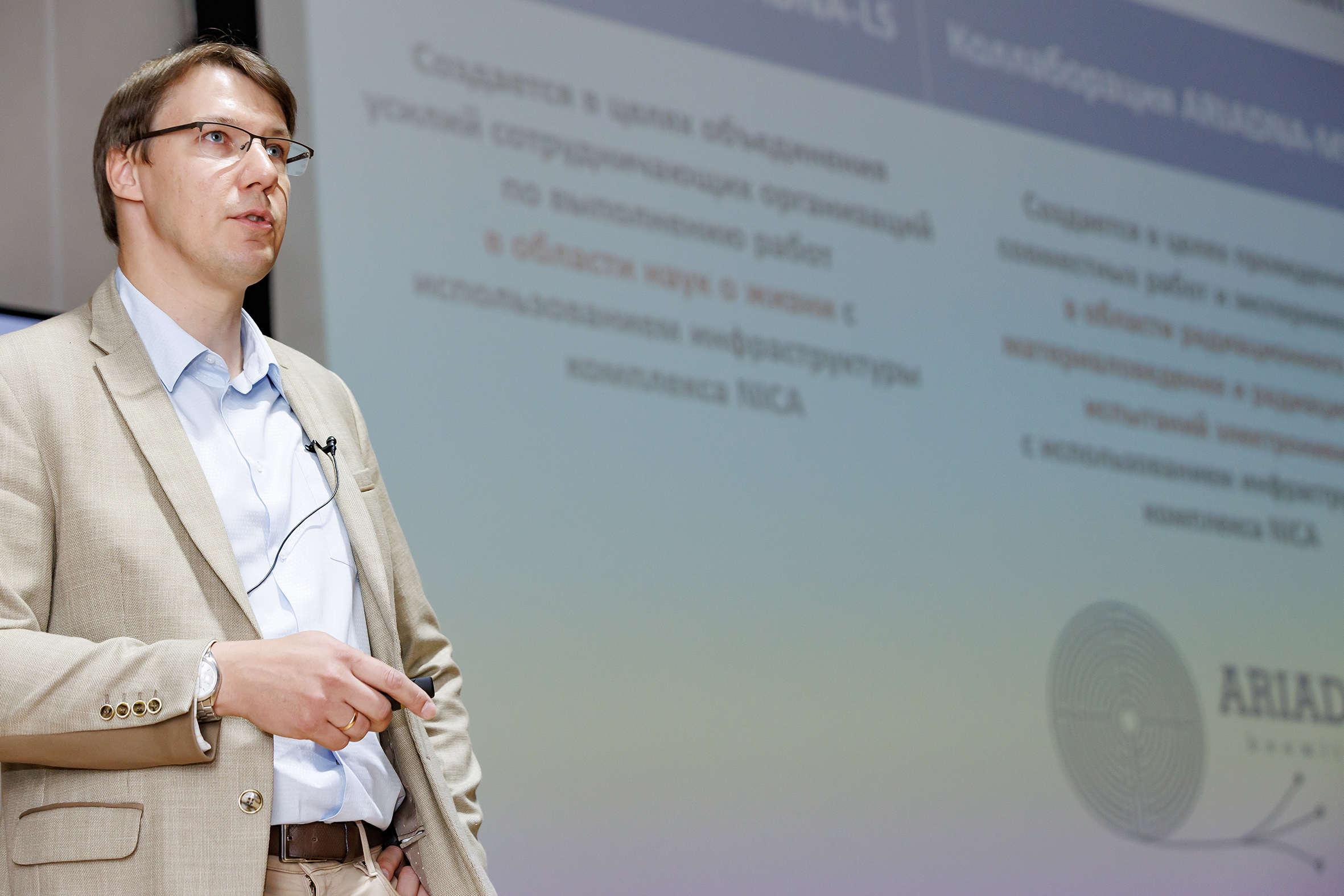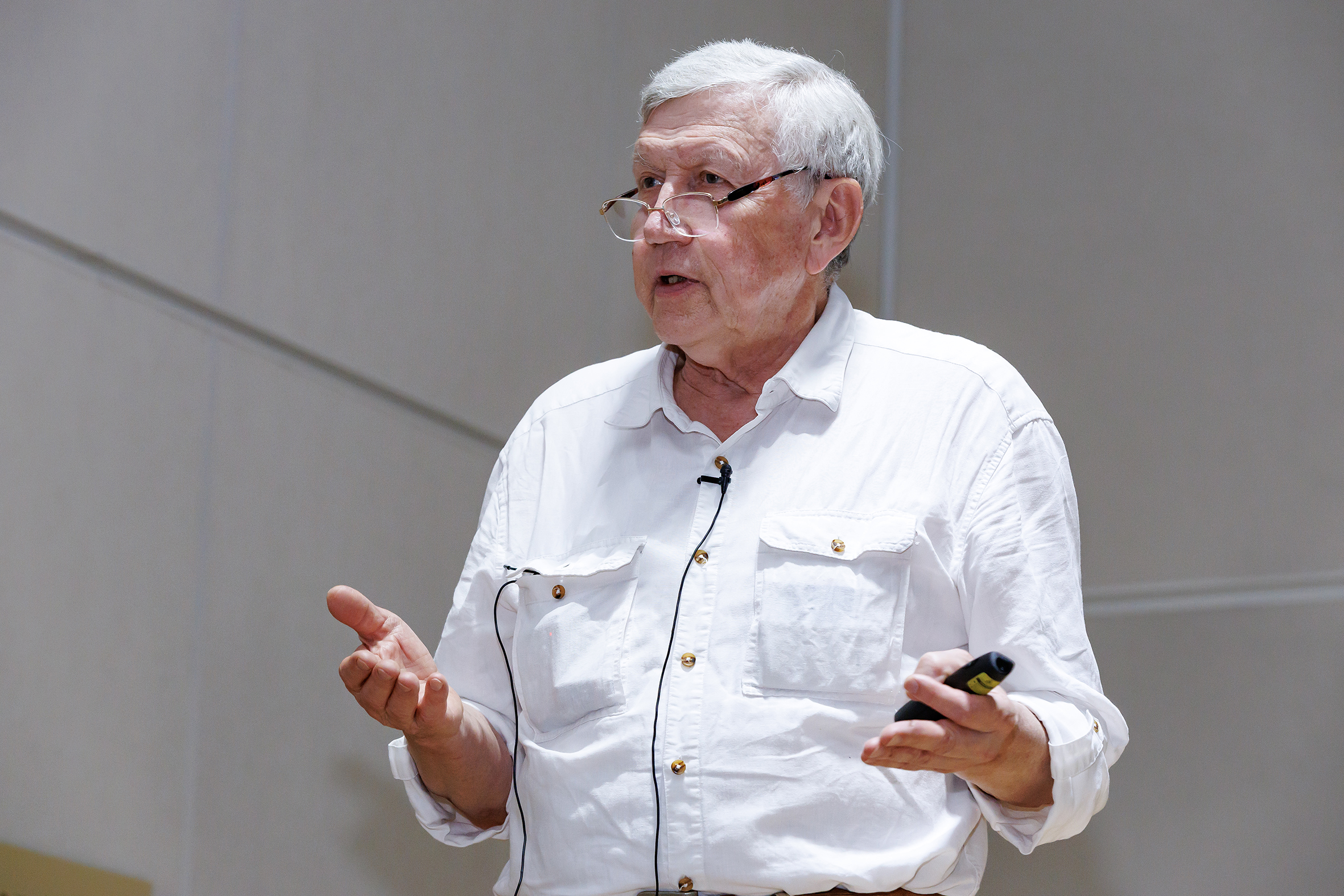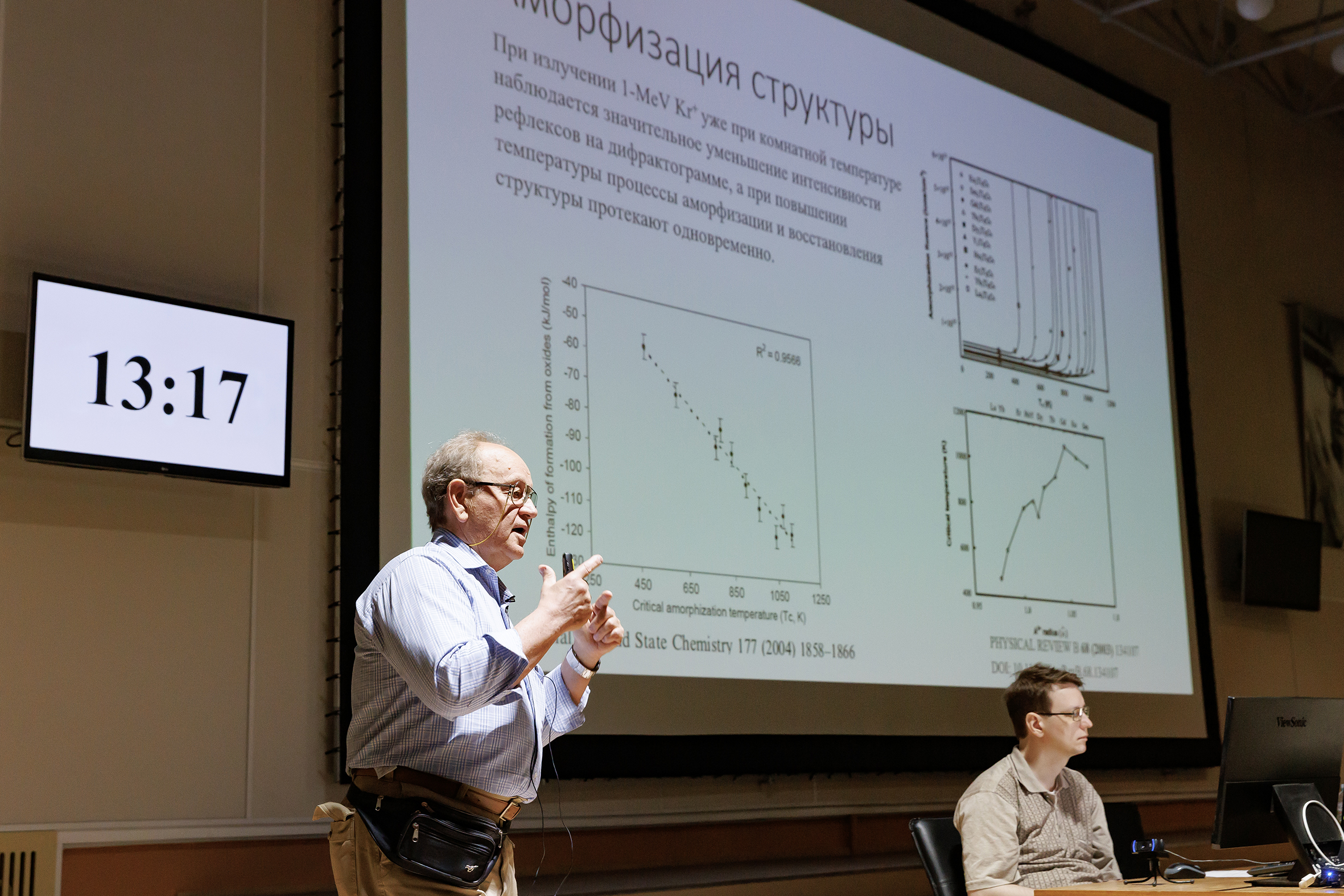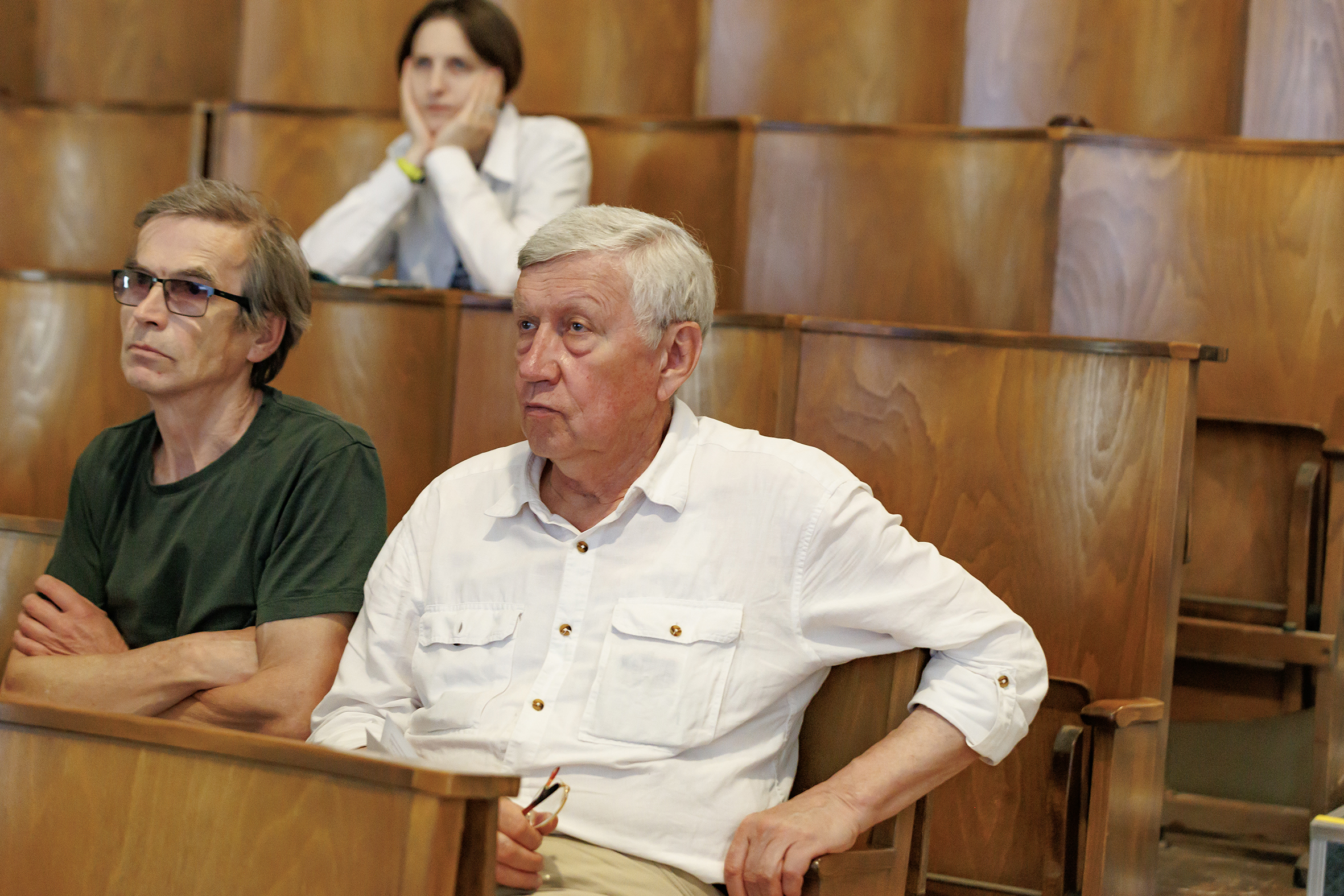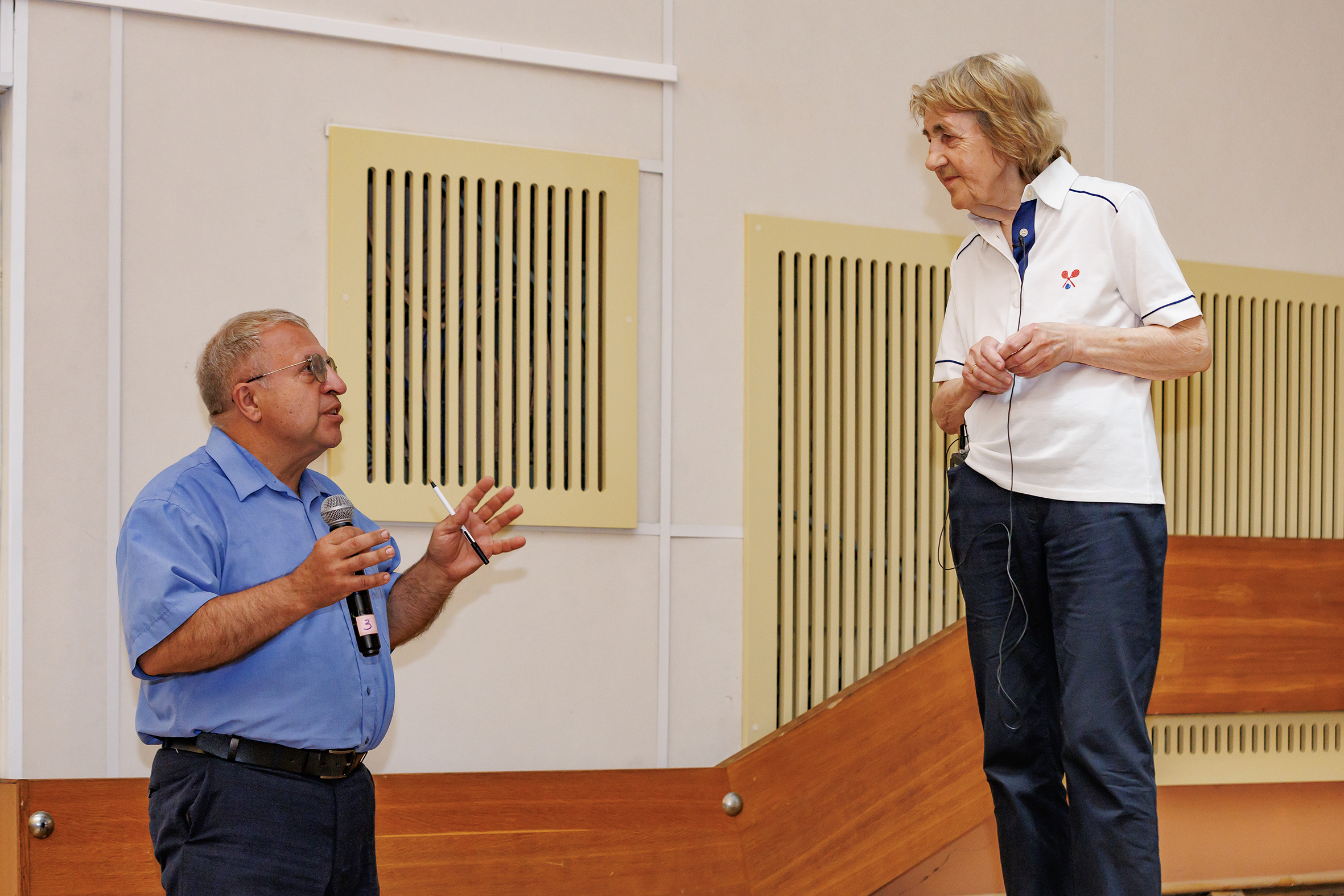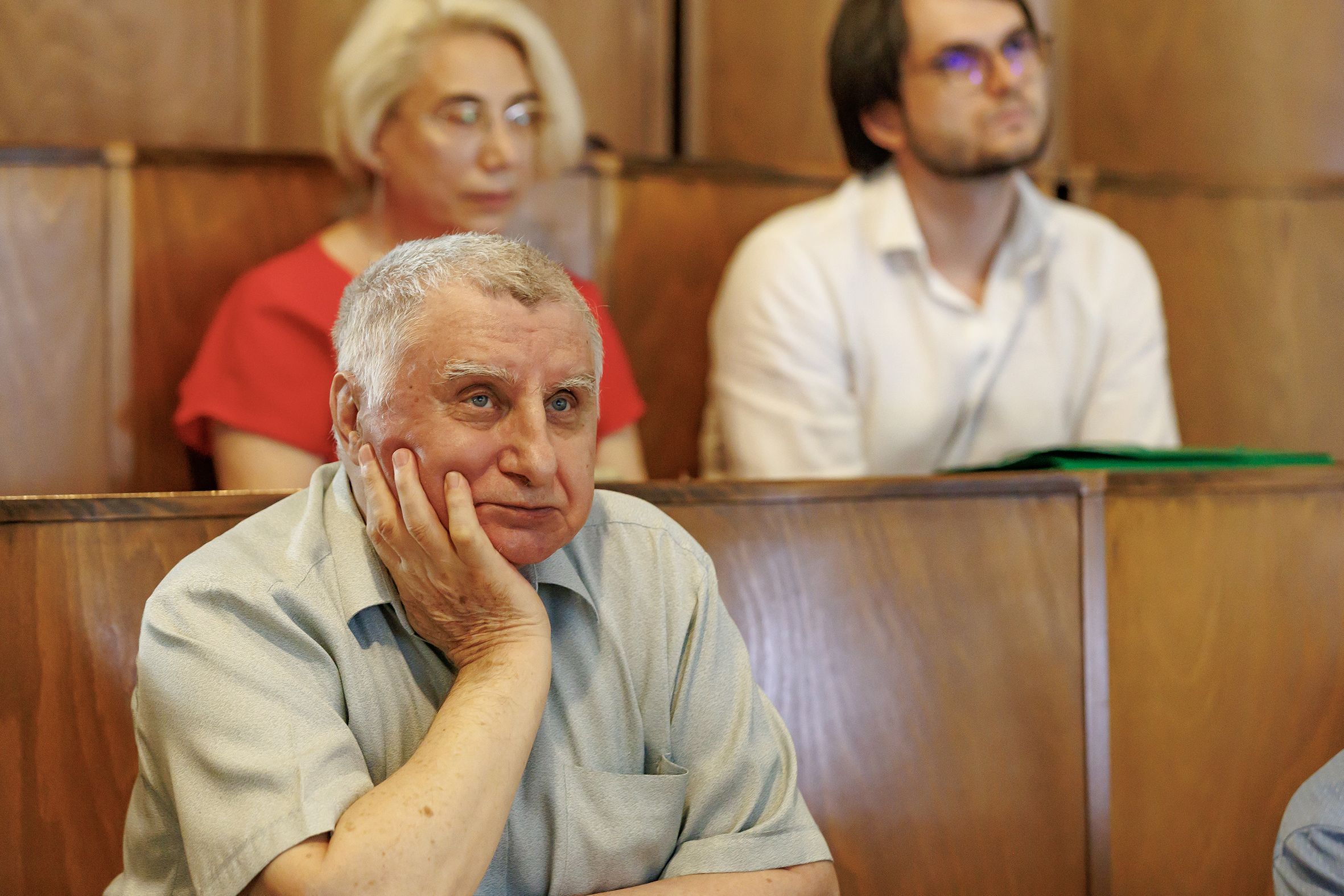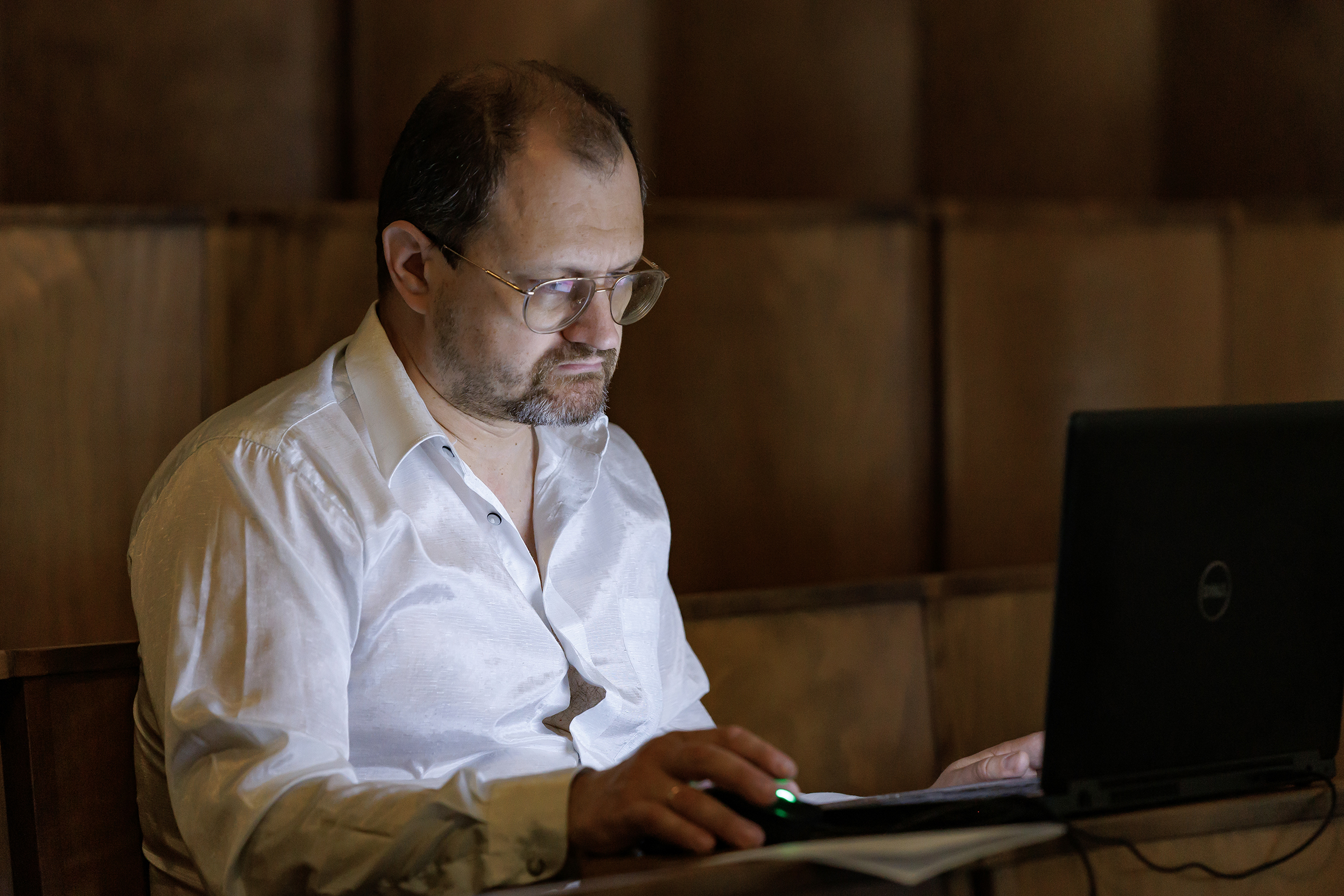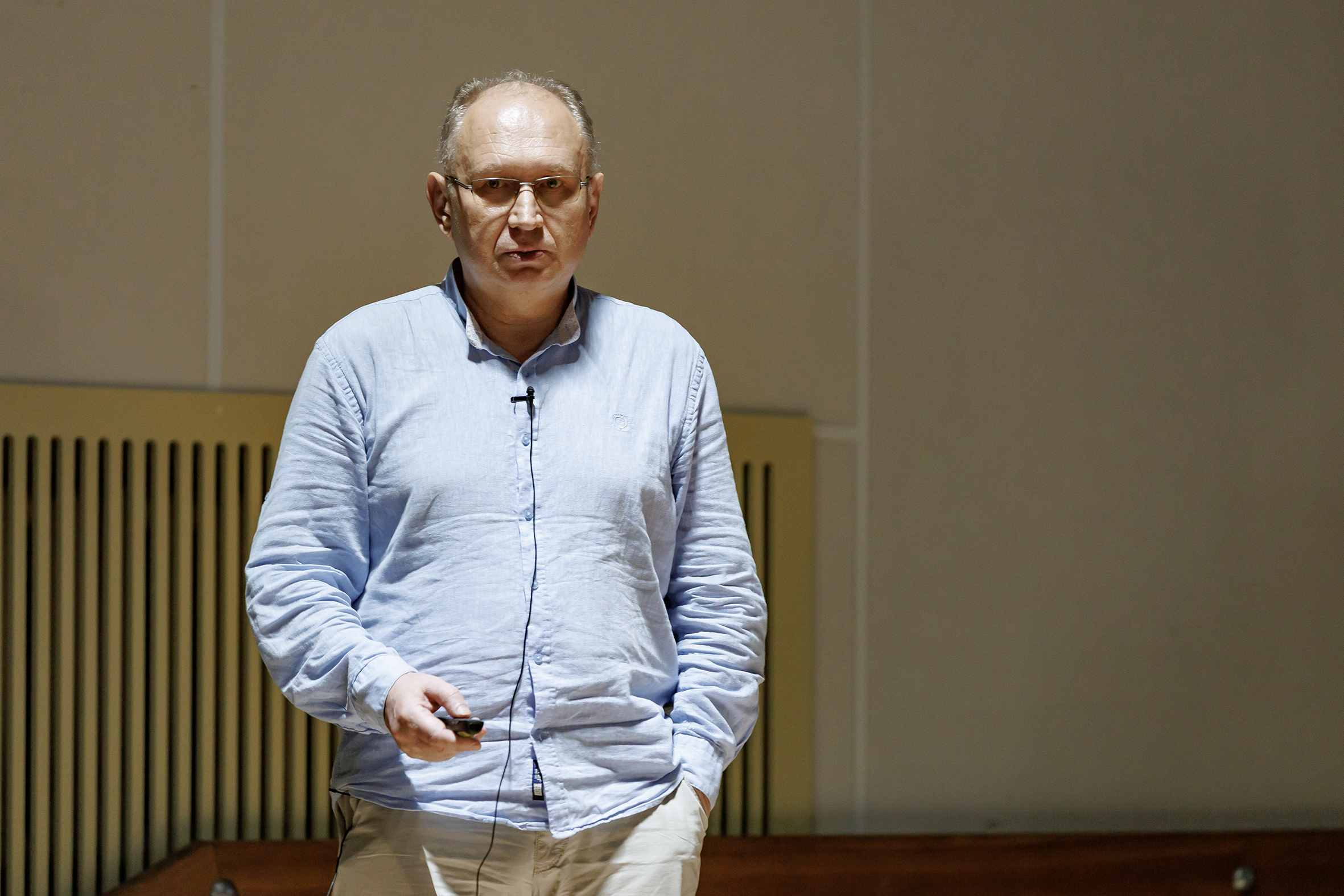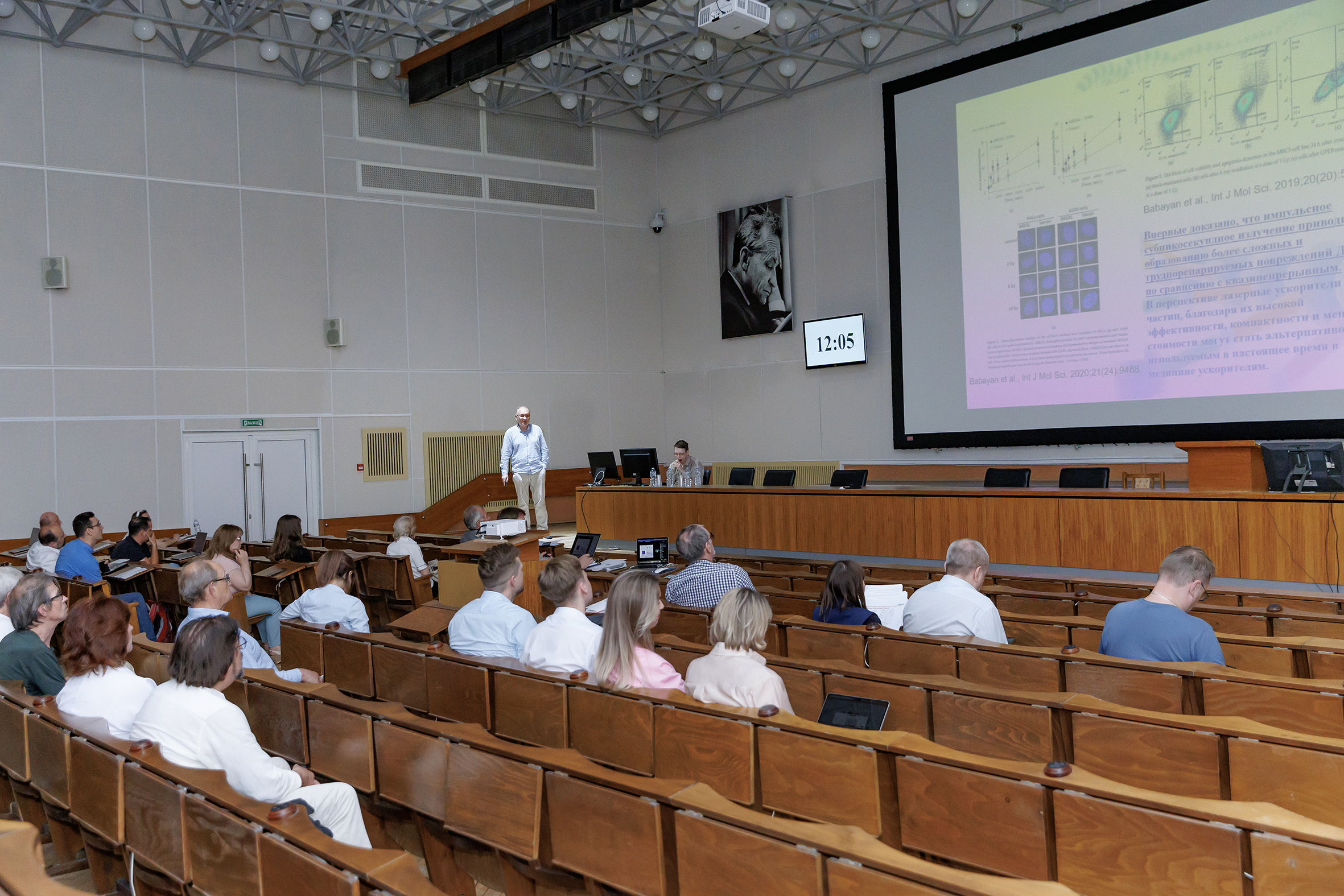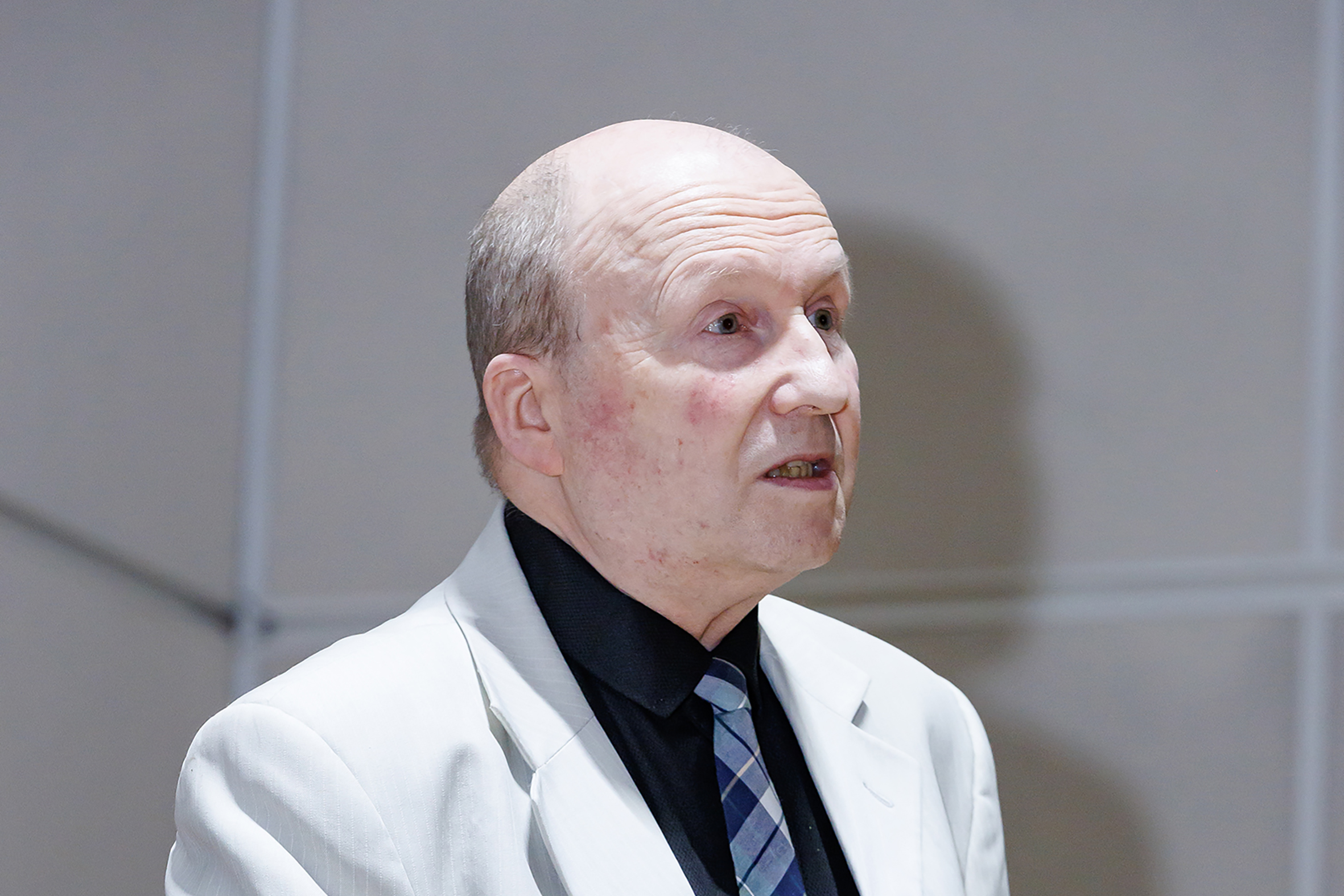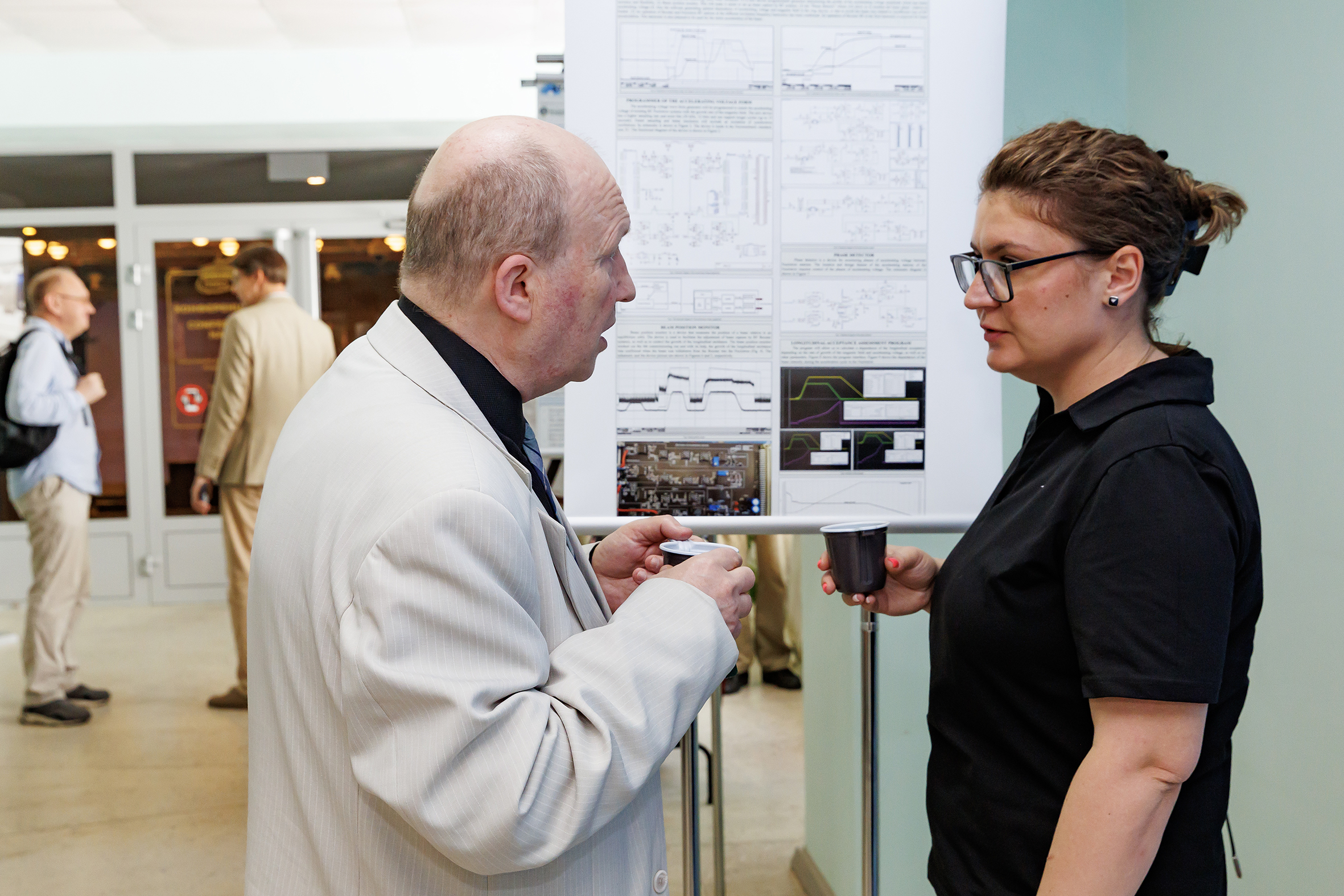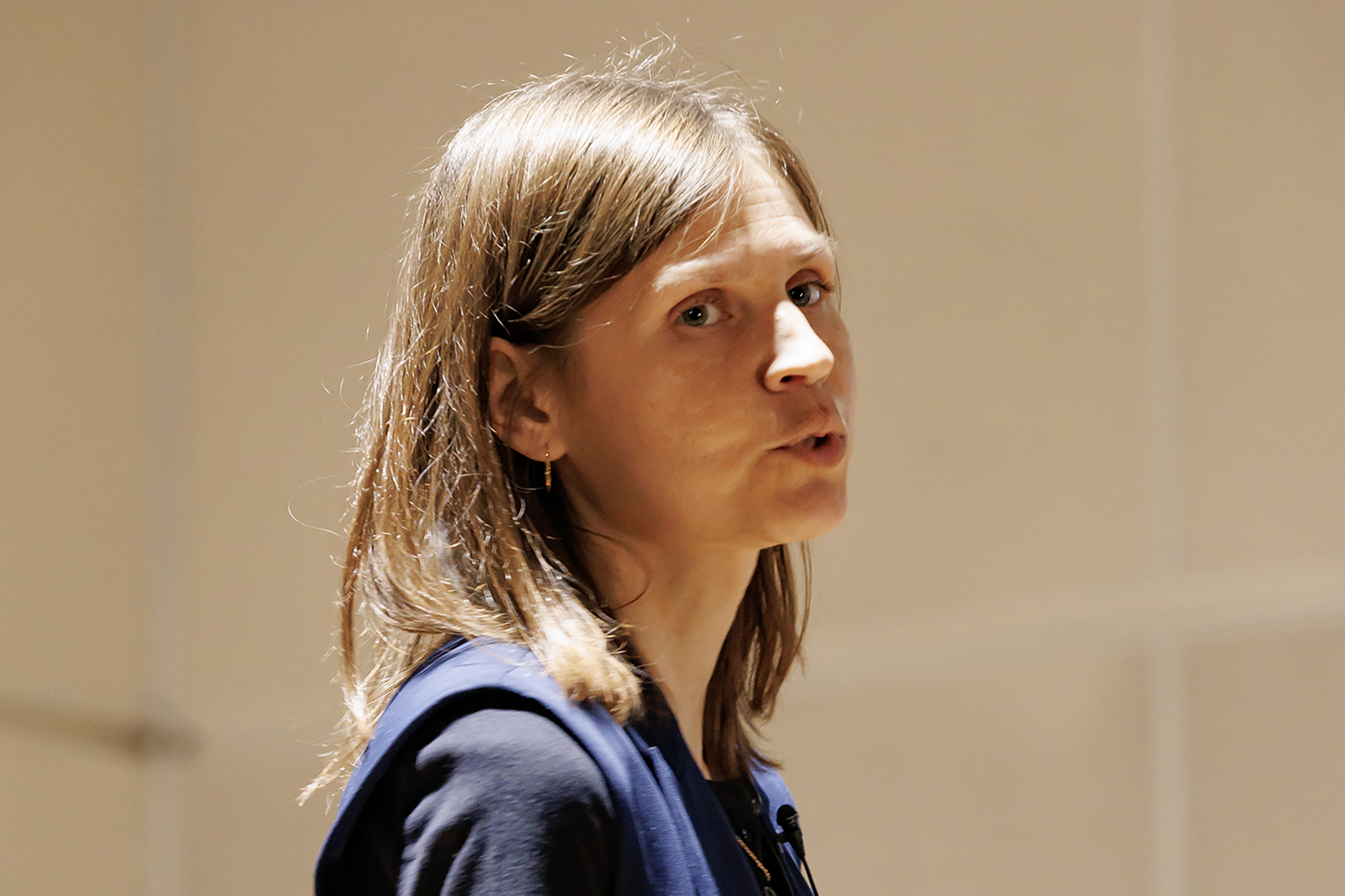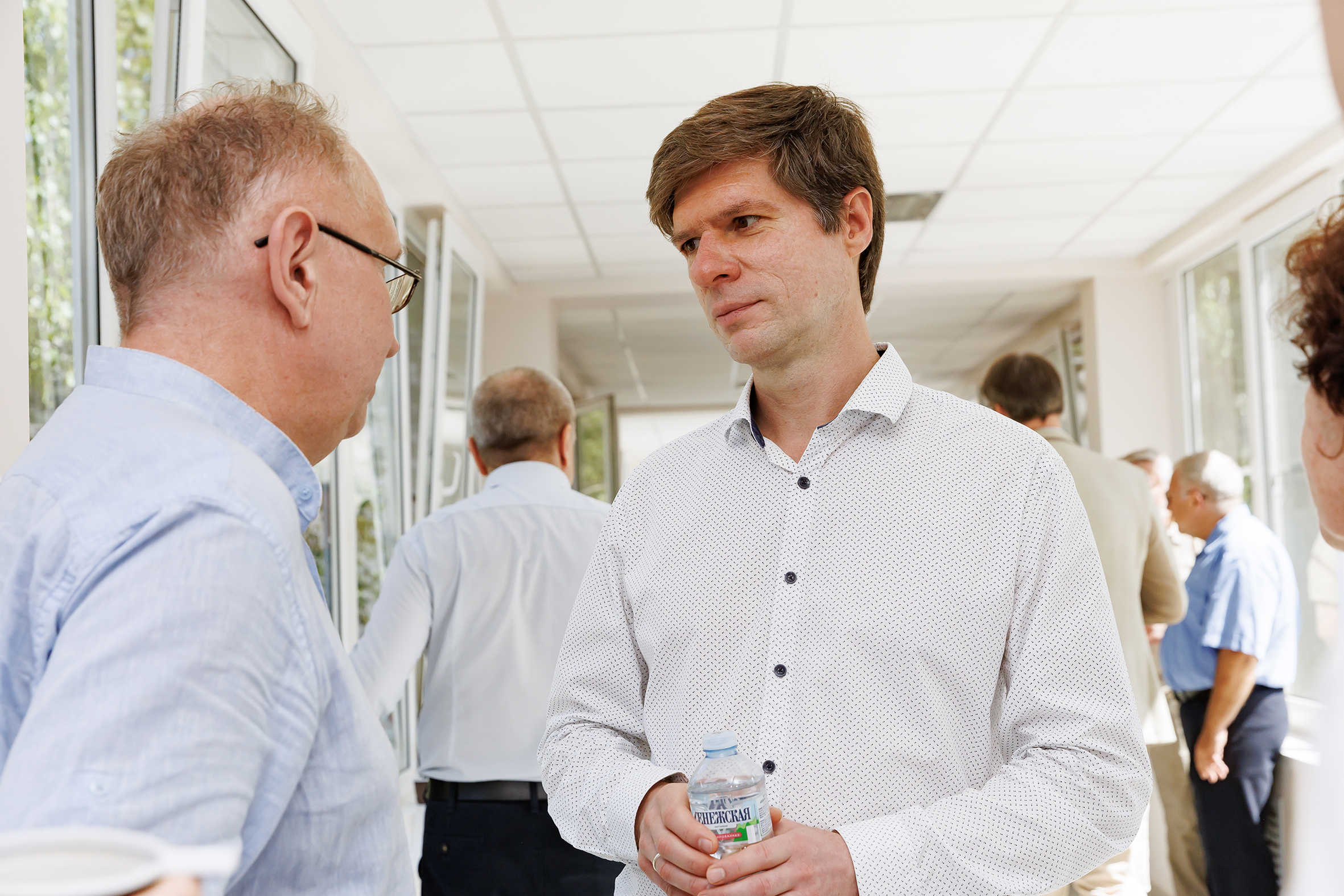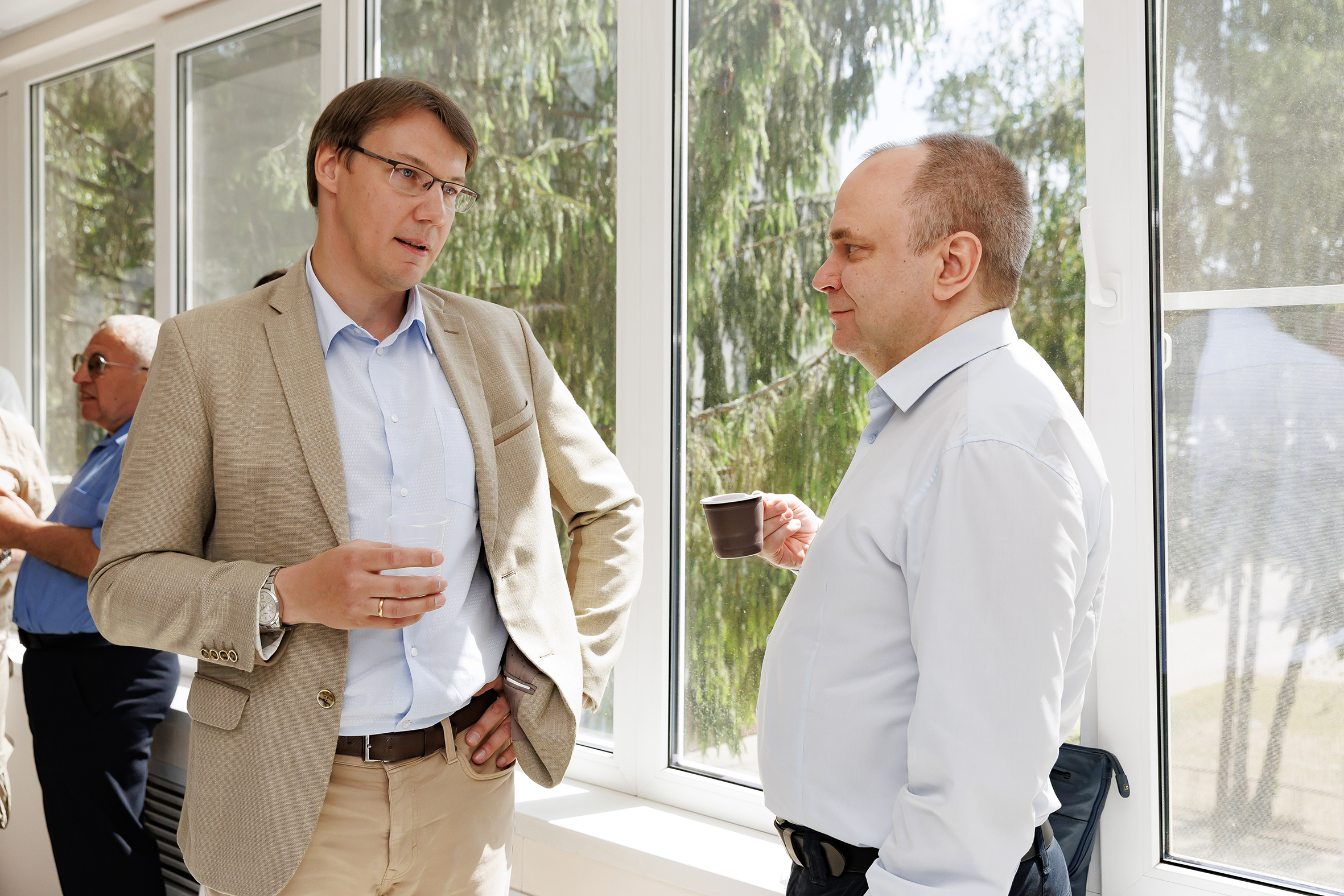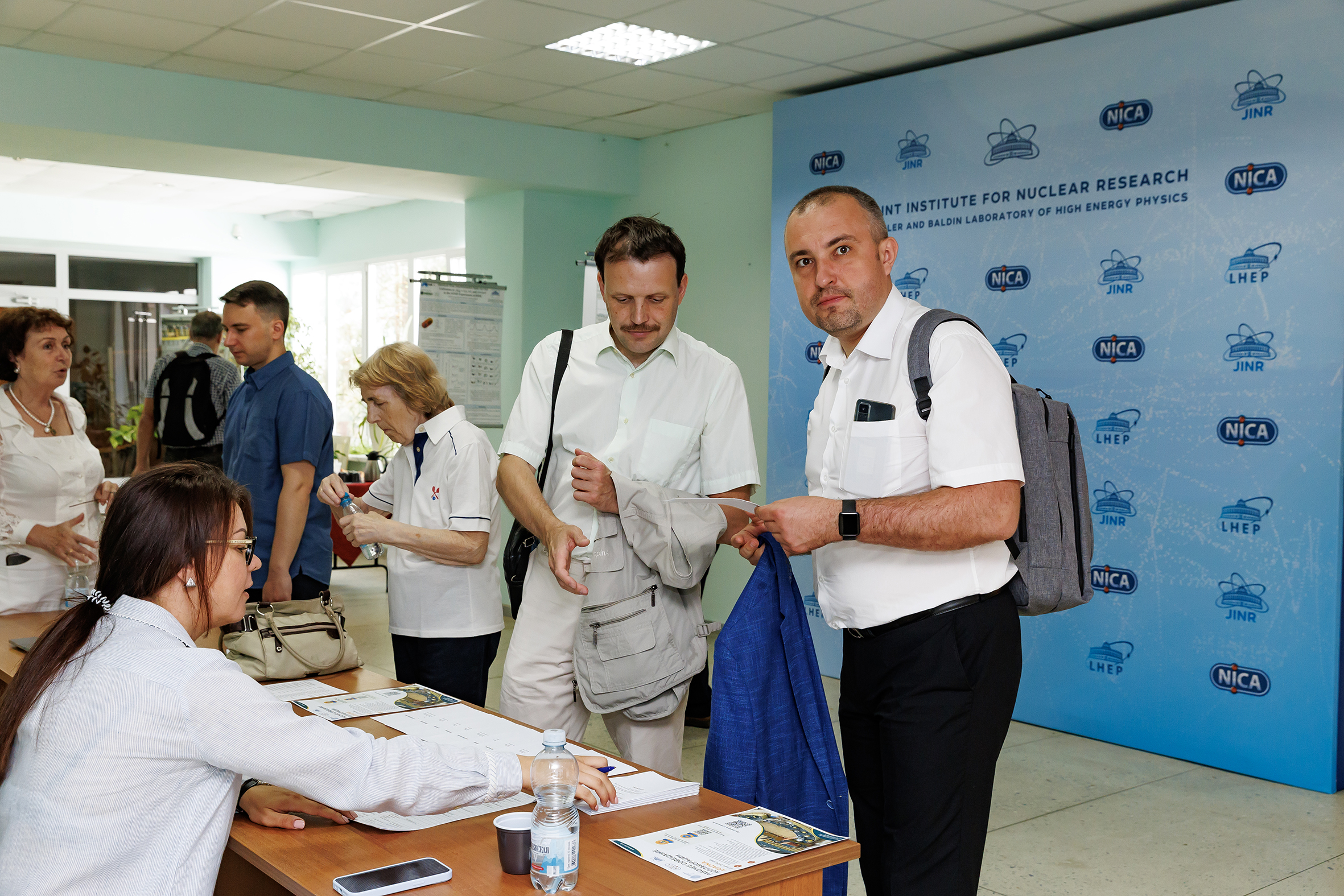ARIADNA Collaboration discussed plans for support programme of Russian Ministry of Science and Higher Education
News, 05 June 2024
On 31 May, the Conference Hall of the Laboratory of High Energy Physics at JINR hosted the ARIADNA Collaboration Workshop, which focused on the scientific programmes of the organizations supported by the Ministry of Science and Higher Education of the Russian Federation to carry out applied research utilising the infrastructure of the NICA Complex.
The meeting, held in a hybrid format, was attended by about 100 researchers from four scientific centres of the Russian Academy of Sciences: Semenov Institute of Chemical Physics (ICP RAS), Kurnakov Institute of General and Inorganic Chemistry (IGIC RAS), Institute for Biomedical Problems (IBMP RAS), Institute of Theoretical and Experimental Biophysics (ITEB RAS); three universities: the Moscow Institute of Physics and Technology (MIPT), the National Research Nuclear University MEPhI (NRNU MEPhI), the North Ossetian State University (NOSU); and JINR.
JINR Vice-Director Latchesar Kostov opened the meeting. He noted the rich agenda of the event and highlighted that the meeting is dedicated to the part of the NICA applied research programme that will receive support of the Ministry of Science and Higher Education of the Russian Federation and be carried out by the organizations subordinate to it.
Head of the ARIADNA Collaboration Oleg Belov presented a report on the status of the collaboration, its participants, current tasks, and development prospects. Currently, 162 representatives of 21 organizations from 5 countries are part of the collaboration. The ARIADNA research programme is under implementation; in late 2022 – early 2023, an experiment was conducted with extracted high-energy ion beams, and the first results were obtained. In addition, Oleg Belov spoke about JINR’s independent efforts to support the work of cooperating scientific organizations over the past two years. “As part of the state programme, many new ideas and approaches have been presented for applied research at the NICA Complex,” Oleg Belov noted. “Following the results of the workshop, we need to establish a shared perspective on the suggested areas of work and assess how they can be integrated into a single programme,” he stressed.
The collaboration includes three main areas of research: ARIADNA-LS for work in the field of life sciences, ARIADNA-MSTE for experiments in radiation materials science and radiation testing of electronics, and ARIADNA NPT, dedicated to the development of advanced technologies in the field of ADS (accelerator-driven system). ARIADNA’s infrastructure includes channels for transporting charged particle beams and experimental zones with irradiation stations. “In addition, we are currently working on creating an auxiliary infrastructure that will include sites for deploying user equipment, preparing samples, and conducting rapid analysis after irradiation,” Oleg Belov noted. “In the near future, we plan to launch the collaboration’s website.”
In the main part of reports, scientists from the organizations participating in ARIADNA presented work plans in their areas. In total, 28 reports on the collaboration’s scientific programme were heard.
ICP RAS researchers discussed the study of radiation transformations occurring in aluminum oxide (sapphire) under irradiation with high-energy ions, patterns of the mechanism of radiolysis of polymer materials, plans to conduct radiobiological studies at the NICA Complex, and an assessment of the radiation resistance of composite materials based on ultra-high molecular weight polyethylene and micro- and nano-disperse media to high-energy ions.
Participants from the IGIC RAS reported on their developments: a new composite material made of gabbro-basalt igneous rocks, radiation resistance of ultralight highly porous aerogel-based materials, and modifications in the structure of high-temperature oxide materials under the action of heavy ions. In addition, IGIC RAS scientists outlined prospects for studying the effects of charged particle beams on the structure and properties of ferrite materials for magnetoelectric devices and presented aspects of modelling the effect of cosmic radiation on ultrahigh temperature ceramics HfB 2(ZrB 2)-SiC under ground conditions.
RAS Institute for Biomedical Problems presented an extensive research programme at the NICA Complex for the development of protective measures against the effects of space radiation during manned missions beyond the Earth’s magnetosphere and high-latitude orbital flights. In particular, the researchers delivered reports on the prospects for pharmacological therapy for neurobiological disorders induced by exposure to charged particles of galactic cosmic rays and testing the study of radiation-protective properties of innovative composite materials with prospects for their application in the space industry.
The report by ITEB RAS researchers focused on the problems of improving the effectiveness of hadron therapy for oncological diseases and included proposals for testing a number of radiation reactions of living organisms on experimental models of cellular spheroids and planaria.
The MIPT scientific programme also addressed the issues of developing new approaches to radiation therapy of cancer using NICA Complex beams. In addition, information was provided on the MIPT instrument base, which is planned to be used in the course of studies of the interaction of ion beams with living systems in a wide range of scales: from the cellular to the atomic level.
The reports from JINR and NRNU MEPhI highlighted the main areas of work on the study of radiation resistance and the development of radiation pinning technologies for high-temperature superconductors of the second generation at JINR in the experiments of ARIADNA. Plans were formulated to develop research methods aimed at assessing the tolerance of integrated circuits to single-event upsets at the SOCHI and ISCRA Stations.
NOSU outlined a variety of tasks to be addressed at the NICA Complex, with a particular focus on studying acute and delayed effects of exposure to high-energy heavy ion beams on the central and peripheral organs of the immune system in warm-blooded animals.
The meeting concluded with a review of the results of the day and plans for upcoming events. The proposal of the Head of ARIADNA Collaboration to prepare the first scientific article on behalf of the collaboration for publication in one of the prestigious international journals was met with support. The participants suggested holding the next meeting this September, with an expanded representation from participating organizations.
